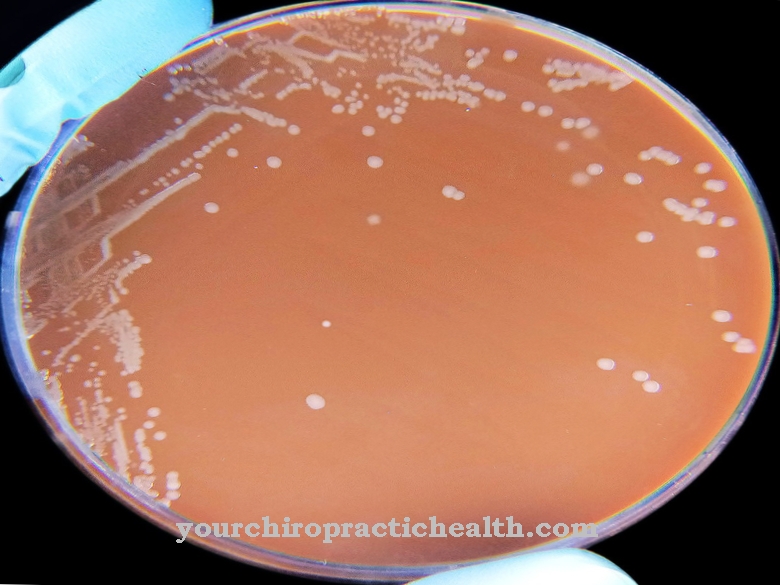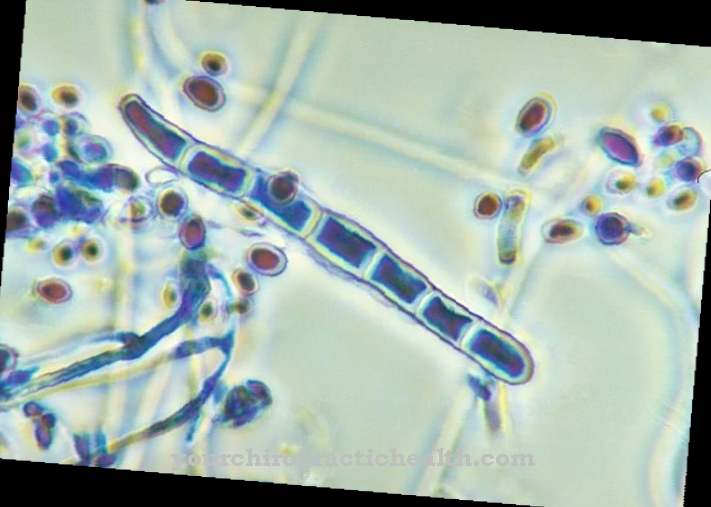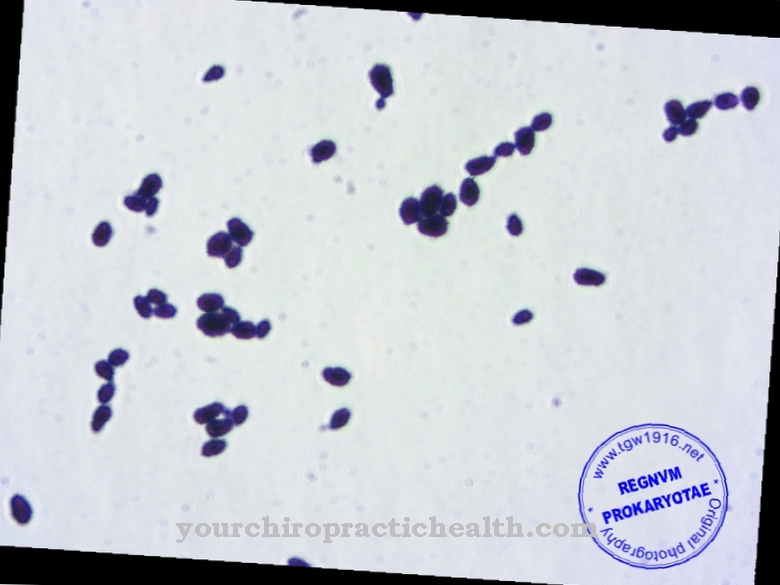The bacterium Streptococcus mitis belongs to the Viridans streptococci. The viridans streptococci occur predominantly in the oropharynx.
What is Streptococcus Mitis?
The Mitis bacteria are gram-positive and belong to the streptococcal genus. Streptococci are spherical bacteria that tend to be arranged in chains. Gram-positive bacteria can be stained blue with the Gram stain. They have a cell wall on which a thick, multilayered murein envelope is superimposed.
The Viridans streptococci form a green halo on blood agar. This is a typical sign of α-hemolysis and gave the cocci their name. Viridans comes from Latin and means "producing a green color".
Streptococcus mitis no longer shows any growth at temperatures below 10 ° Celsius. At 45 ° C, however, the pathogen can still multiply well. The Mitis group as a subgroup of the Viridans streptococci appears in the medical literature as well Sanguis-Group called.
The pathogenicity of the streptococci of the α-hemolytic group has long been underestimated. The β-hemolytic groups were feared because of the serious illnesses they could cause. However, the pathogens from the α-hemolytic group can also cause serious diseases. They are therefore referred to as opportunistic or facultatively pathogenic germs. Opportunistic bacteria are harmless in a healthy person. However, they use a weak immune system to cause an infection. Such an infection is also called an opportunistic infection.
Occurrence, Distribution & Properties
The streptococci of the Mitis group live in the oral cavity of humans. They can also be found in the ear, nose and throat area. In rare cases, the bacteria can also be found in other parts of the body such as the skin. Streptococcus mitis could also be detected in the dental plaque of various animal species.
The bacteria are transmitted through direct contact. Almost everyone in adulthood has Mitis group streptococci in their mouth. Streptococci can therefore also play a role in bite injuries. The risk of infection is highest with a human bite. Around 50 percent of all bite wounds caused by humans lead to an infection. Deep bite wounds near the joints in particular often become inflamed.
When antibiotics were not yet available, the consequences of a human bite were therefore drastic. If medical care was taken within the first hour after the bite, an amputation had to be performed in ten percent of all cases. If medical care was only possible later, the amputation rate rose to over 30 percent. Animal bites only lead to infection in around 20 percent of cases.
Illnesses & ailments
Streptococcus mitis is also only facultatively pathogenic in the oral cavity. In healthy people, the bacteria are part of the physiological oral flora. However, under certain conditions, Streptococcus mitis can increase caries formation. A high sugar consumption has a beneficial effect. Caries is also known colloquially as tooth decay. It is a multifactorial disease of the tooth.
The bacteria metabolize the carbohydrates from the food into acids. The acids dissolve calcium phosphates from the tooth enamel, so that demineralization occurs in the long term. Initially, white spots form on the tooth enamel. If color pigments from food are deposited in these spots, they turn dark. If there is no remineralization at this stage, the disease progresses to the dentin.
The dentine caries can cause toothache because the dentine is significantly softer than the tooth enamel, so that the caries can spread widely in this plane. In the so-called caries profunda, the deep dental caries, the lesion has penetrated into the tooth pulp. This stage is associated with severe toothache. At this stage, the tooth can often no longer be saved and has to be removed.
Mitis streptococci can get into the blood through injuries in the oral cavity, for example after dental interventions. Hematogenous spreading can cause bacterial vegetation with Streptococcus mitis to form on the heart valves. These lead to permanent inflammation of the inner lining of the heart. The inner lining of the heart, the endocardium, lines the entire interior of the heart and also forms the valves.
When infected with Streptococcus mitis, endocarditis lenta develops. Endocarditis lenta is a subacute variant of bacterial endocarditis. The disease usually begins insidiously. The symptoms are rather unspecific. Those affected develop a fever of unknown origin and generally feel rather weak. They are appetite and pale. Often there is anemia. This is caused by the adhesions in the heart valves, where many red blood cells are destroyed when they pass through the heart valves.
In later stages, the anemia-related lack of oxygen can lead to drumstick fingers and watch glass nails. Drumstick fingers are noticeable due to the rounded swellings of the finger end links. Watch glass nails are caused by connective tissue hypertrophy in the nail bed. The nails are strongly arched in the transverse direction and in the longitudinal direction. The smallest cardiac-related embolisms cause lenticular, bluish, painful nodules on the fingers and toes. These are also known as Osler nodules. They are a typical symptom of bacterial endocarditis. If individual bacteria or groups of bacteria become detached from the heart valves, they can reach other organs via the bloodstream and cause secondary diseases there.
Due to the risk that bacterial endocarditis could develop, preventive and follow-up care is carried out for predictable dental interventions in patients with an increased risk of endocarditis. Patients are given antibiotics about an hour before and a few hours after treatment. Patients at risk include those with heart valve replacements, those with a congenital heart defect, and those with heart transplants.














.jpg)













